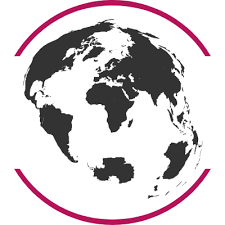Partner profile | Salo Sciences


In 2021, Salo Sciences started a new partnership with Blue Forest and the US Forest Service on an exciting new project supported by the California Wildlife Conservation Board.
Written by: Jessica Alvarez, Communications & Content Manager
Salo Sciences is a climate technology company that uses satellites and artificial intelligence to quantify environmental change to help mitigate climate risk. Through their research and mapping platform, Salo Sciences is working to provide key information that can help reduce catastrophic wildfires and conserve forests as a means to fight climate change.
In 2021, Salo Sciences started a new partnership with Blue Forest and the US Forest Service on an exciting new project supported by the California Wildlife Conservation Board. The idea behind the “Big Trees Project” is to identify and map the locations of all the large trees in California in order to 1) produce the data which can be delivered to California and federal agencies, helping them design better conservation strategies and 2) understand what environmental conditions support these large trees to identify where on the landscape those conditions exist, now and in future climates.
“These large trees provide a lot of value, not just in terms of the carbon they store but also in terms of the habitat they provide for both endangered and vulnerable species, as well as non-threatened species across California,” explained Salo Sciences co-founder & CEO, David Marvin.
The challenge, he explained, is that while these trees provide a lot of vertical heterogeneity in terms of the types of habitats they provide, they are not very common and are oftentimes distributed across multiple different species.
But the opportunity in mapping these trees goes beyond the obvious.
“I think a lot of organizations—both scientific and commercial—are focusing on carbon. This project goes beyond just looking at carbon as an ecosystem service to looking at habitat quality and other variables that are really important to proper forest and ecosystem functioning, more so than just the straight carbon stocks that are on the landscape,” David explained. “The other unique part is the focus on mapping individuals across the landscape, which isn’t something you typically see happen when it comes to forest mapping. The combination of both—looking beyond the single variable but also getting really high resolution, means that we have this really cool map of every large tree that exists in the state of California.”
For David, the best aspect about this partnership so far is the unique collaboration between a nonprofit, a for-profit, and a federal agency.
“These types of partnerships are pretty few and far between. To have a company like ours, trying to do this really innovative cutting-edge mapping, along with a nonprofit like Blue Forest doing this innovative financing for forest restoration with the federal agency which is responsible for the landscapes that we’re looking at, I think, is really unique and a great model for how we can push new restoration conservation strategies into the future. We can’t just rely on the agencies themselves to do this work, because we each play a very important role,” he said.
As for future outcomes of this project, David hopes to see this data get used to create new types of management strategies. “There’s an opportunity here to be taking advantage of all the new types of data and insights that, not just this partnership, but a lot of other partnerships are working on right now to rethink the past. This kind of myopic focus on even-age stand management, or clearcut logging, and to then be able to pencil out the cost of doing forest restoration misses part of the picture. We need to be thinking about some of the other values that we can actually calculate as part of these projects to make sure that we’re incorporating not just the value of timber, but the other services that are provided by these landscapes,” he said.
The long-term goal for this project and this type of mapping is to expand to other forested landscapes beyond California and ideally, to be able to utilize this high-resolution data to simulate wildfire hazard to understand the dynamics of fire across the Western US.
“A lot of the current data tends to be really out of date, so Salo Sciences is producing annual maps of wildfire hazard at high-resolution so that we always have the current status of where fire behavior is most extreme. Having up to date hazard data is critical for restoration planning and prioritization. For restoration strategies, it is critical to be able to reduce the fuels in the landscape that then hopefully reduce wildfire intensity when a fire does burn through; fires are part of the ecosystem in California and they will burn at some point. It’s our job to try to restore these forests and make them more resilient to wildfires that do occur,” David concluded.